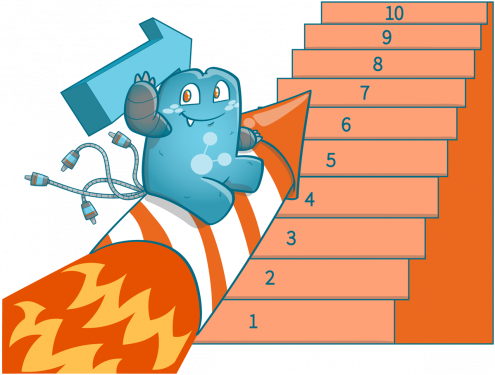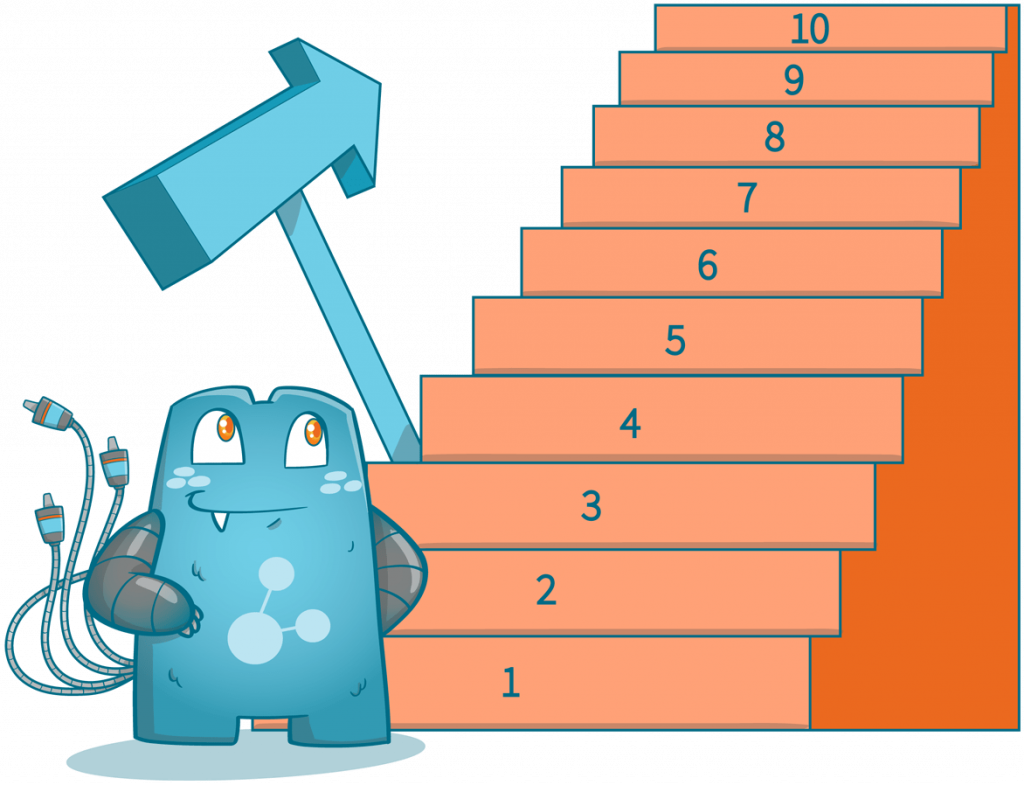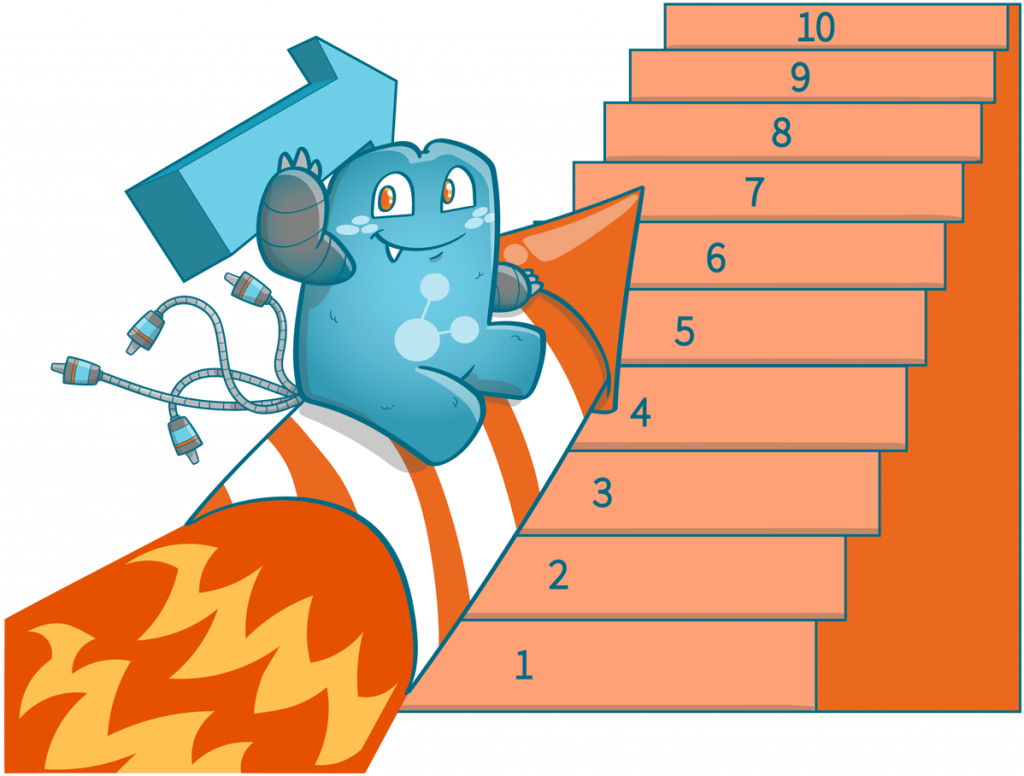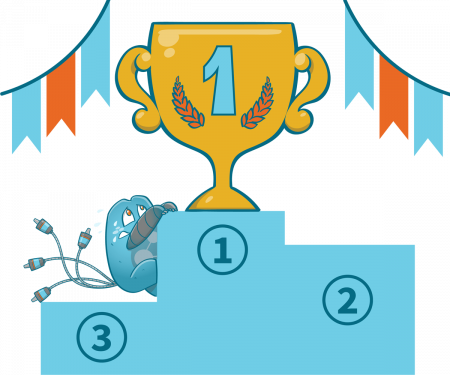Top 10 Easy Internal Linking Strategies to Step Up Your Ranking

As the competition to earn the top spot on search engine results pages becomes greater, you need to step up your internal linking strategies to get in front of the race. One of the most effective ways in improving your SEO is to implement top internal linking strategies.
In this article, we will talk about internal linking strategies that might suit the needs of your website.
A Quick Overview on Internal Links
Have you ever wondered what the highlighted and underlined words in a piece of content are? Well, they’re internal links that marketers use to lead you to other pages on their site.
Internal links are found on almost all websites on the internet. When clicked, they allow a web user to transfer from one location to another within the same domain. Internal links can come in the form of text, images, videos, or other elements that people can find on a typical web page.
A site owner needs to incorporate internal links into the content since doing so helps web users and search engines navigate the website quickly. With internal links, a user can easily transfer from one page to another relevant page without using the search page. Through this link, users can collect all the information they need in just a tiny fraction of time.
As mentioned earlier, internal links also help search engines. Since search engine crawlers use internal links to locate pages on your site, having internal links will allow crawlers to collect all the information on your web pages and index them.
Once a crawler indexes your page, it will already show up on SERPs. Aside from assisting in the crawling and indexing process, internal links also help search engines understand what your website is talking about by connecting the information your pages speak about.
If search engines think that your pages can be a good source of information, they will ensure that more web users see your site. This means that they will give your pages higher rankings since you show expertise in your chosen industry.

Linking Structure
When building internal links, you can’t just simply link all your pages together. This will confuse search engines, and at times, users. That is why you need a good internal linking structure so that the flow of information from page to page will be smooth. Plus, having a good internal linking structure will ensure that your site architecture will be organized; thus, easy to navigate.
Creating a Good Internal Link Structure
There isn’t a definitive way of describing what a good internal link structure is. The quality of an internal linking structure will depend on the website’s goals; however, certain aspects are similar to most excellent structures on the internet. Here are the elements:
Link Important Pages
The first and most crucial aspect in creating a link structure is to link your most important pages. It would be difficult for search engines to crawl and index your most essential pages without internal links. So, to ensure that web users see your essential pages, you need to link them appropriately.
Plus, linking important pages can optimize the spread of link juice throughout your website.
Include Contextual and Navigational Links
There are two major types of internal links: navigational and contextual. Navigational links are the ones that help users navigate your website, while contextual links are the ones that are incorporated into the content.
The most common examples for navigational links include the ones found on your header, footer, and navigation bars that link to category pages, about us pages, blogs, services, products, etc.
While navigational internal links aid in navigation, contextual links are used to link relevant content within the site and are paired with anchor texts to give users an idea of what to expect once the link is clicked. It is important to include contextual links since they give SEO value to your content.
Use Keywords in Anchor Texts
Since anchor texts are paired with internal links, optimizing your anchor texts is also a good idea. When thinking of anchor texts, be sure to use keywords in anchor texts without sounding awkward. If the keyword won’t fit the context of the statement, better not use the keyword. However, if it will fit naturally with the text around it, there’s nothing wrong with placing the keywords on the anchor text.
Keep in mind that some marketers advise against the use of exact-match keywords in internal link anchor text. Again, if it fits the sentence, it’s totally fine. Lastly, don’t forget to place keywords on image alt attributes as it has value for your SEO efforts.
Shallow Click-Depth
There is an unofficial rule on the internet that web users must reach a particular piece of content with just two clicks. This is important since one of the significant purposes of incorporating internal links is to shorten locating the information that a web user needs.
With a shallow click-depth, users won’t get lost in your website, making them lose interest in finding information. To support a shallow click-depth, it is also advisable to use breadcrumbs to give users an idea of what page they are currently in.
Don’t Overdo the Number of Internal Links
Anything in excess is harmful. This saying is true with internal links. When placing internal links, you need to ensure that you don’t go overboard and bombard a web page with tons of internal links.
Imagine reading a text that has a lot of underlined and highlighted words. With a ton of internal links on a page, you might get flagged as spamming and make the readability of your content really low. It might even make your eyes hurt.
So, as a rule of thumb, incorporate up to a maximum of five internal links for a 1500-word article. This way, you get to avoid getting flagged with spamming by search engines, and at the same time, you won’t affect the readability of the content.

Common Internal Linking Strategies
Optimize Anchor Texts
When building internal links, you’d need to use optimized anchor texts that are clear and relevant to your content. A good anchor text will increase your CTR, especially if the text used piques the interest of your users.
When picking your anchor text, you need to make sure that the information on the linked page is highly relevant to the text surrounding the anchor text.
Use Internal Linking Tools
Manually placing internal links on your site is a good practice, but how will you manage the links if your website contains thousands of pages? Managing your internal links would be a total disaster as it will take up all of your time.
If you want to manage all your internal links it would be wise to use an internal linking tool. An internal linking tool allows you to insert internal links into your content with just one click. Plus, these tools allow you to identify key phrases or keywords in your website where you can incorporate internal links.
Tools allow you to automate your internal linking process which will help you save up on a lot of time.
Don’t Forget About Breadcrumbs
Placing breadcrumbs on your website greatly improves the user experience (UX) for your visitors. Breadcrumbs are the internal links (usually found at the top part of the page) that show users where they are located in the site structure.
With just one click, users can go back to a level higher than where they currently are.
Craft Tons of High-Quality Content
You can’t possibly incorporate a lot of internal links into your site if you don’t have any content. However, you need to ensure that the content you will be crafting is high-quality, and not just for the sake of having avenues for internal linking.
With high-quality content, you can drive more organic traffic while giving users all the important information they have. Using internal links on low-quality content can have no effect on your site. If users don’t get interested or engaged with your content, they won’t probably read it. Thus, they won’t see the internal links you’ve incorporated.
To ensure that your internal linking strategies will go smoothly, you need to craft content regularly. Most sites publish posts weekly, every other day, and even every day. The amount of content you post highly depends on the capacity of your team.
Maximize the Use of Content Clusters
Content clusters are like bubbles of information that focus on a certain topic. Every cluster on your site has a pillar page (main topic) and all the pages related to it are linked from it. This way, search engines will easily understand what a certain cluster is talking about.
When using topic clusters, you should link all relevant pages from the pillar pages, and link the pillar page from the individual pages. This is a technique to signal search engines that a pillar page is among the most important pages on your site.
In addition, having clusters will also help you focus on keywords that you’re targeting and let search engines that you have a ton of content talking about that particular keyword.
Aside from keeping your pages organized, using clusters will aid your users to get all the information they need in one location (cluster).
Add Links to Relevant Blog Posts
It is normal to incorporate internal links into the paragraphs of your content. However, it is also wise to place links to relevant blogs after some paragraphs. This way, you can use an anchor text that fully displays what the linked web page is talking about (full title of the blog post).
Placing links to relevant pages in your site after a paragraph can serve as a backup plan if your visitors don’t get interested in the anchor texts within the content.
You can also add a “Related Post” section at the sides or bottom of the page to have elements in your site that could attract more visitors. But, you should also know your limits when it comes to placing internal links. Having too many links on a page can sometimes look spammy which doesn’t help keep readers focused on the content.
Perform Manual Internal Linking
Automating your internal link-building efforts is an excellent idea. But, doing manual internal linking is also excellent. You should know that applications don’t think the same way as humans and they only consider which pages to link depending on the parameters set in their program.
This means that they sometimes might miss important pages that don’t fit the qualities they are looking for in a post.
Here is where manual internal linking comes in. Before performing automated internal linking, you first need to identify a couple of important and highly relevant web pages that you can link to your newly crafted content. Once you are done, you can proceed with the automated internal linking using your tool.
After this, you need to check whether the important pages you’ve listed have also been linked by the tool. If not, perform manual internal linking.
Create an Ultimate Guide
Crafting an ultimate guide on a certain topic is great for your website. Your ultimate guide should contain all the information about a certain topic (it should be in-depth). Be sure to structure the ultimate guide properly where there are sections that discuss every important aspect of what you’re talking about.
Doing so allows you to place internal links every after a section that leads the visitor to other articles that talk about that topic. Same with the concept of content clusters, you need to link back to the ultimate guide so that search engines will consider it as one of your important pages.
Perform a Content Refresh
This might sound weird, but performing a content refresh is also good for your internal linking efforts. However, you should carefully pick which content to refresh. The piece of content needs to be performing well in rankings.
When a piece of content ranks well in search engines, it means that they are receiving tons of organic traffic. With that in mind, you need to refresh the content and incorporate new internal links into the content. This way, you can boost the ranking of your newer pages that are related to the content being refreshed.
Go for Naturally-Looking Links
One of the key points in internal linking that most forget is to link naturally. Most of the time, internal links that look forced into a sentence won’t attract readers to click it. Reading an unnatural link will feel awkward for the reader; thus he/she might not click it.
Also, if you try to force keywords into links, search engines might flag it as spamming so you should be careful.
The thing here is, you need to ensure that people will be able to read the sentence naturally and they will understand the context of why the internal link was incorporated into that sentence.

Internal Linking Strategies Focused on Search Volume
There are a lot of internal linking strategies, and each one is based on a particular factor. For the strategies we will present, we will be using a target keyword’s search volume as a basis.
- Using Keywords with High Search Volume to Boost a Page
It is often difficult to rank for high-volume with high search volume keywords. One way to successfully do this is by picking a particular page on your website containing loads of information designed to invite more customers and convert them. An excellent example of this type of web page is a home page that resembles a landing page.
For this strategy, you don’t have to worry about your navigational links. Place them in their usual location to serve their purpose—help users find your important content and discover all pages relevant to what they are looking for. However, your contextual links should be directed to your home page (the one that resembles a landing page). You also need to use relevant anchor texts with keywords and close synonyms.
Since many pages point to the home page, search engines will deem it as one of your important pages. This means that it will give it more attention and rank it accordingly.
When using this strategy, you should remember that when you direct a lot of time on a specific URL, the first anchor text will receive top priority. So, you need to restrict the access of web crawlers to the navigational links at the top of the page.
In this strategy, your primary goal would be to help your home page’s rank increase.
- Use Mid-Search-Volume Keywords to Boost Landing Pages
If you’re planning on improving the rank of key landing pages such as product category pages or blog pages, using mid-search-volume keywords would be a good idea.
In this approach, you’ll be using internal links paired with anchor texts that contain mid-search-volume keywords. The internal links from your home page will lead web visitors to the most relevant landing pages (category pages or blog pages). The pages within these relevant landing pages, like product pages and articles, should also link back to the landing pages to drive traffic as much as possible.
- Targeting Low-Search-Volume Keywords Using Internal Links
This strategy works best if your business is in a specialized niche where driving highly qualified leads to bottom-level pages like particular blog posts or product listings is difficult.
In this strategy, you will be focusing your internal links on the bottom-level pages of your website. You would need to link these bottom-level pages and help users understand the bigger picture of what your website is all about.
Since low-search-volume keywords don’t have that much competition, you can gain organic traffic to your site from the people that search these keywords. With less competition, your pages have a higher chance of ranking in SERPs. Just remember that when picking keywords, they should actually be searched for.
Since automating internal link-building is an excellent strategy, you’d also need an excellent tool to ensure success. Check out Internal Link Juicer to know if it will fit your website’s needs.
Boosting SEO Rankings through Internal Linking Strategies
Internal linking isn’t a hard aspect of building a top-ranking website. You just have to be critical in choosing which pages to focus on linking and what other elements in a website will give you more internal linking opportunities. Through this list of internal linking strategies, you can start having a better internal linking structure that will be beneficial for your visitors, search engines, and your overall site’s rankings.
Don’t waste any internal linking opportunity on your site. Check out Internal Link Juicer today to maximize your internal link-building efforts!






